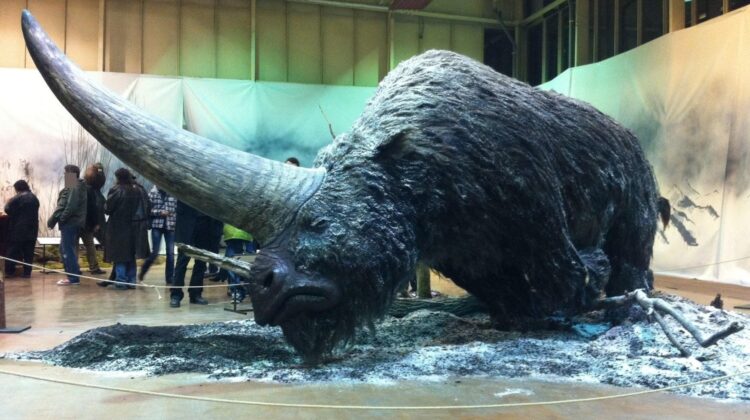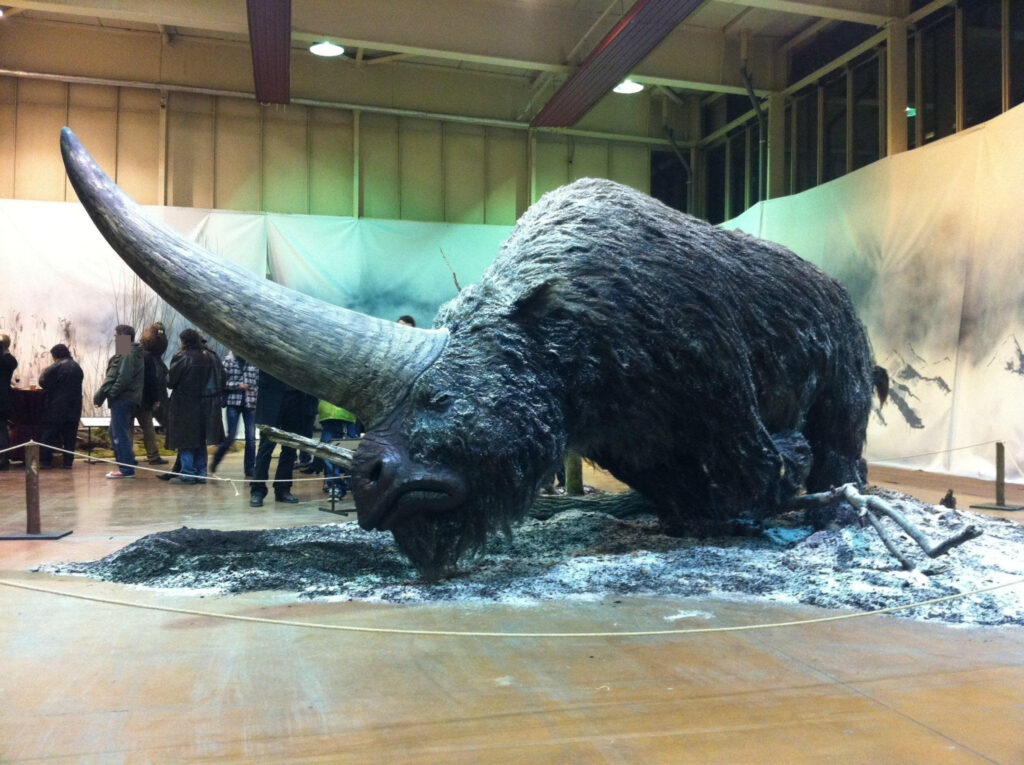
Elasmotherium, also known as the “Thin Plate Beast,” is an extinct genus of rhinoceros that lived in Eurasia during the Late Pliocene through the Pleistocene period, spanning from 2.6 million to 29,000 years ago. This massive animal was one of the largest rhinoceroses to ever exist, with a weight of up to 5 tons and a length of over 4 meters.

Elasmotherium was characterized by its massive size, elongated legs, and a single large horn on its forehead. The horn was believed to be over 1.8 meters long, making it the largest horn of any known mammal. It is unclear what the horn was used for, but some theories suggest it was used for digging up vegetation or defending against predators.

The first fossils of Elasmotherium were discovered in the 18th century in Russia, and since then, numerous fossils have been found throughout Europe and Asia. While the exact cause of its extinction is unknown, some experts speculate that it was due to changes in climate and habitat loss.

Despite its extinction, Elasmotherium continues to captivate the imagination of scientists and the public alike. Its massive size and unique features have made it a popular subject of paleontology research and have even inspired fictional depictions in popular media.

Overall, Elasmotherium stands as a fascinating example of the diverse and remarkable creatures that once roamed the Earth, and it serves as a reminder of the importance of protecting our planet’s biodiversity.

Leave a Reply